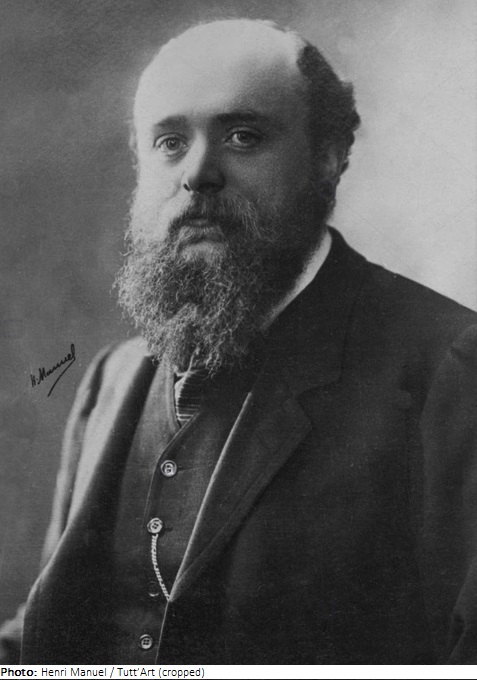
| Roles | Referee |
|---|---|
| Sex | Male |
| Full name | Ernest Joseph•Laurent |
| Used name | Ernest•Laurent |
| Born | 8 June 1859 in Gentilly, Val-de-Marne (FRA) |
| Died | 25 June 1929 (aged 70 years 17 days) in Bièvres, Essonne (FRA) |
| NOC |  France France |
Ernest Laurent studied at the École des Beaux-Arts in Paris from 1877 - interrupted by military service 1879-80 - amongst others, under Ernest Hébert, whom he particularly admired. In 1882-85 he participated unsuccessfully in several competitions for paintings of town halls. With the help of a travel grant, he was able to visit Italy and North Africa in 1885. For his work Le Christ et le Paralytique (_Christ and the Paralytic), he was awarded the Prix de Rome in 1889.
From 1890, Laurent worked at the Académie de France in Roma, directed by Hébert. Numerous awards followed, including the Gold Medal of the World’s Fair in Paris in 1900, appointment as Knight of the Legion of Honor in 1903 and Officer in 1912, and member of the Académie des Beaux-Arts in 1919. That same year, he was appointed professor at the École des Beaux-Arts.
Despite his position as one of the leading painters of his time, Laurent remained largely unknown to the general public. Initially influenced by Impressionism, he explored colour-tone contrasts in oil sketches. His deep religiosity, Hébert’s turn to Symbolism, and his admiration for Pierre Puvis de Chavannes (1824-1898) led to a break with his friend Georges Seurat (1859-1891), one of the protagonists of Pointillism. A mystical experience in Assisi during Laurent’s Roman period slipped into the painting St-François d’Assise (1895).
His personal style, between Impressionism and Pointillism, remained dominant until the end of his career. Laurent eschewed firmly delineated contours and aimed for a blurring, in which the pictorial elements are distinguished from one another only by merging colors or slightly different light and dark values.
With Jeune femme en rose (La comtesse Lovatelli) (Young Lady in Pink, 1896), Laurent launched a lucrative career as a portrait painter, especially of the Jewish upper middle class. In addition, he painted female nudes in a scenic context. Other motifs were floral still lifes, idyllic rural landscapes, and city scenes. As a history painter, in 1899 he created the large-scale Première Messe chantée à Ville-Marie en 1642 par Barthélemy Vimont (First Mass sung in Ville-Marie in 1642 by Barthélemy Vimont_), a gift from the French government to the Montréal Cathedral. In 1905, he created Paris, Auxerre, and Vauhallan, three of the seven wall paintings in the reading room of the Hôtel Terminus in Lyon. In 1905-15, he based his four allegories in the Salle des Autorités at the Sorbonne in Paris on a frieze by Puvis de Chavannes in the university’s auditorium. Laurent also produced notable lithographs.
| Games | Sport (Discipline) / Event | NOC / Team | Phase | Unit | Role | As | |
|---|---|---|---|---|---|---|---|
| 1924 Summer Olympics | Art Competitions |  FRA FRA |
Ernest Laurent | ||||
| Painting, Open (Olympic) | Final Standings | Judge |